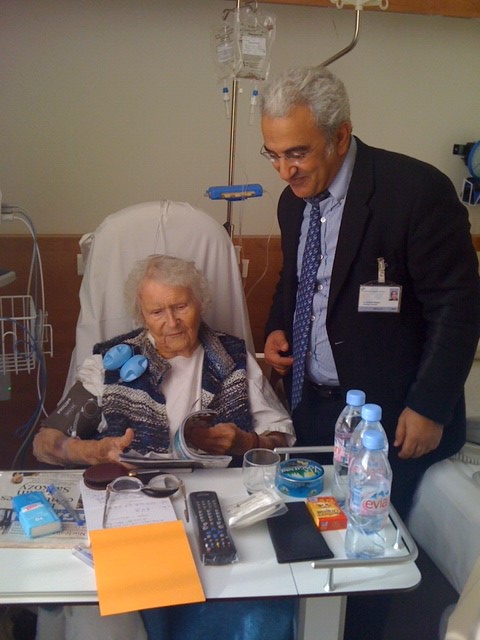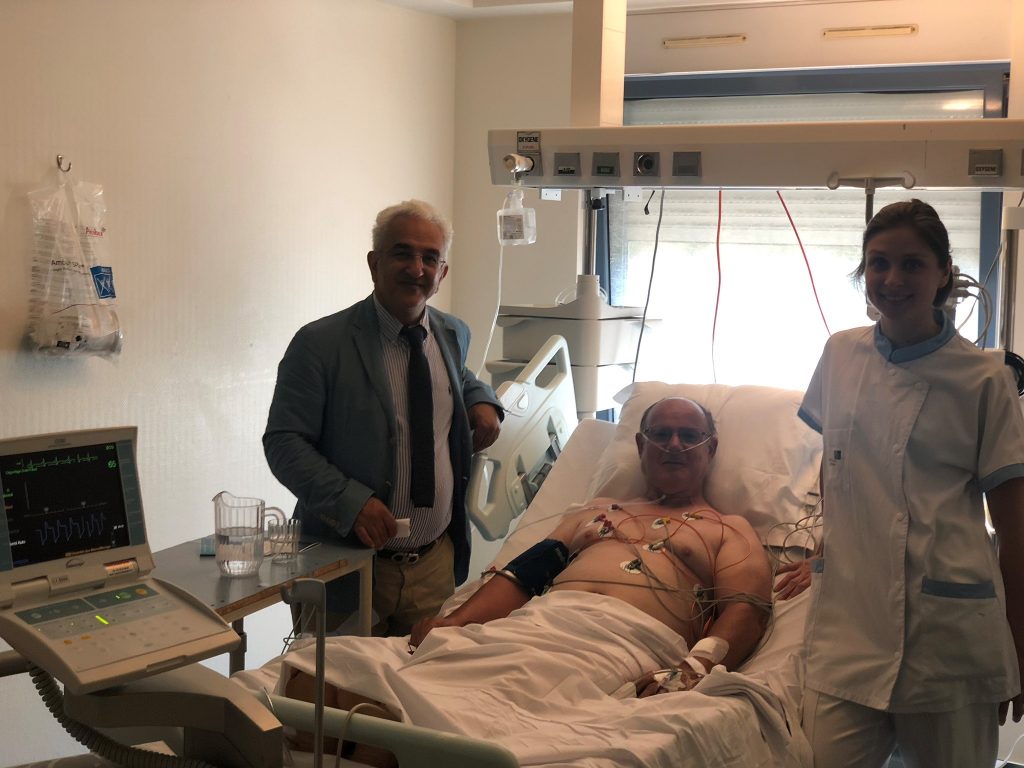COURSE OF A
˚ BEFORE THE INTERVENTION:
The surgeon entrusts the patient to an experienced team performing the preoperative assessment, performed within 24 to 48 hours before the procedure. Basic exams include:
– blood tests
– electrocardiogram
– ultrasound and dopplers carotid and lower limbs
– coronogram is redone if the last made is too old
– checking the lung condition
– search for ENT and dental infections
– anesthetic consultation
– electrophysiological study (EP) to analyze the heart’s electricity
If the complete assessment is perfect, the intervention is scheduled within 24 to 48 hours.
˚ SURGICAL INTERVENTION:
The team consists of about 6/7 people.
– 2 surgeons
– 1 anesthetist
– 1 perfusionist pump attendant
– 2 nurses
Under general anesthesia, the procedure is done most of the time, through a vertical incision in the middle of the thorax, the sternotomy.
During the procedure, the heart / lung machine is used to perform CPB (Cardiopulmonary bypass), which takes over the heart and lungs, while allowing blood circulation.
The heart is temporarily stopped to perform the surgery.
For coronary bypass surgery, surgery can be performed with a beating heart.
˚ AFTER THE INTERVENTION:
The patient is transferred to intensive care for a minimum of 24 hours. The duration depends on the complexity of the intervention but does not exceed 48 hours.
As soon as his constants are stable, he is awake. The patient is extubated.
It is then transferred to a unit requiring less special surveillance and this for 48 hours.
In the last moment, he is again transferred to the traditional hospital unit.
˚ POST - OPERATIVE STAY IN TRADITIONAL HOSPITALIZATION UNIT:
This stay lasts an average of one week. The patient is then seen daily by the surgeon and a cardiologist.
Postoperative control examinations are performed.
The kinesitherapy is undertaken early in order to resume a rapid autonomy.
˚ THE CONVALESCENCE:
Most often the patient is transferred to a convalescence center.
But he can return to his home and perform his rehabilitation externally.
In all cases, rehabilitation by physiotherapy should be carried out for optimal recovery of physical abilities and the resumption of normal activities.
Regular medical monitoring by the attending physician and the cardiologist will be necessary after surgery.
Professor Wassim Khoury remains very close to the patients and their families throughout the procedure; he accompanies them, reassures them as to the intervention practiced, explaining in detail the intervention in its entirety and risks. He explains the choice of his technique. It reassures the female on the aesthetic aspect of the incision.
Before the intervention, even though everything is orchestrated by his secretariat, he calls the patient and / or the family and is always available either by his presence or by phone.
At the exit of the block, he immediately informs the family close to the procedure of the intervention.
But in addition to being a surgeon, it is his ability to reassure patients and families that has made it possible, over and over again, to break the deadlock for hesitant patients on heavy surgeries.
Avant l’intervention, quand bien même tout est orchestrée par son secrétariat, il appelle le patient ou/et la famille et se montre toujours disponible soit par sa présence, soit par téléphone.
A la sortie du bloc, immédiatement il informe la famille proche du déroulé de l’intervention.
Mais outre sa qualité de chirurgien, c’est sa capacité à rassurer patient et famille qui a permis maintes fois, de franchir le cap pour des patients hésitants, sur des chirurgies lourdes.


